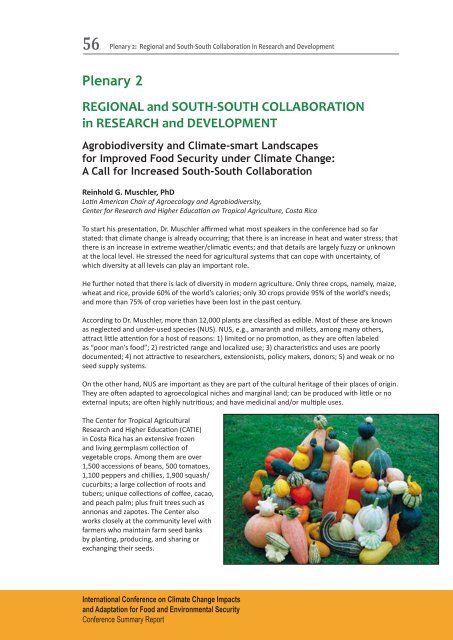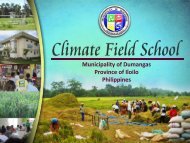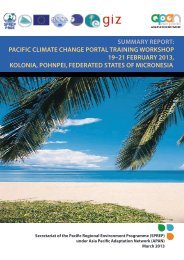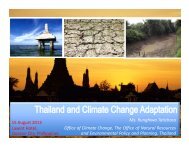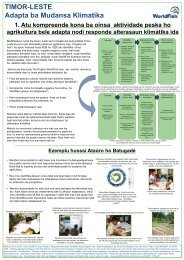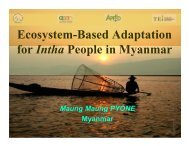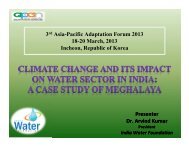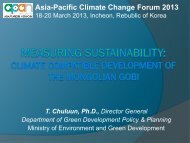PDF file (2.44 MB) - Asia Pacific Adaptation Network
PDF file (2.44 MB) - Asia Pacific Adaptation Network
PDF file (2.44 MB) - Asia Pacific Adaptation Network
Create successful ePaper yourself
Turn your PDF publications into a flip-book with our unique Google optimized e-Paper software.
56Plenary 2: Regional and South-South Collaboration in Research and DevelopmentPlenary 2REGIONAL and SOUTH-SOUTH COLLABORATIONin RESEARCH and DEVELOPMENTAgrobiodiversity and Climate-smart Landscapesfor Improved Food Security under Climate Change:A Call for Increased South-South CollaborationReinhold G. Muschler, PhDLatin American Chair of Agroecology and Agrobiodiversity,Center for Research and Higher Education on Tropical Agriculture, Costa RicaTo start his presentation, Dr. Muschler affirmed what most speakers in the conference had so farstated: that climate change is already occurring; that there is an increase in heat and water stress; thatthere is an increase in extreme weather/climatic events; and that details are largely fuzzy or unknownat the local level. He stressed the need for agricultural systems that can cope with uncertainty, ofwhich diversity at all levels can play an important role.He further noted that there is lack of diversity in modern agriculture. Only three crops, namely, maize,wheat and rice, provide 60% of the world’s calories; only 30 crops provide 95% of the world’s needs;and more than 75% of crop varieties have been lost in the past century.According to Dr. Muschler, more than 12,000 plants are classified as edible. Most of these are knownas neglected and under-used species (NUS). NUS, e.g., amaranth and millets, among many others,attract little attention for a host of reasons: 1) limited or no promotion, as they are often labeledas “poor man’s food”; 2) restricted range and localized use; 3) characteristics and uses are poorlydocumented; 4) not attractive to researchers, extensionists, policy makers, donors; 5) and weak or noseed supply systems.On the other hand, NUS are important as they are part of the cultural heritage of their places of origin.They are often adapted to agroecological niches and marginal land; can be produced with little or noexternal inputs; are often highly nutritious; and have medicinal and/or multiple uses.The Center for Tropical AgriculturalResearch and Higher Education (CATIE)in Costa Rica has an extensive frozenand living germplasm collection ofvegetable crops. Among them are over1,500 accessions of beans, 500 tomatoes,1,100 peppers and chillies, 1,900 squash/cucurbits; a large collection of roots andtubers; unique collections of coffee, cacao,and peach palm; plus fruit trees such asannonas and zapotes. The Center alsoworks closely at the community level withfarmers who maintain farm seed banksby planting, producing, and sharing orexchanging their seeds.International Conference on Climate Change Impactsand <strong>Adaptation</strong> for Food and Environmental SecurityConference Summary Report


